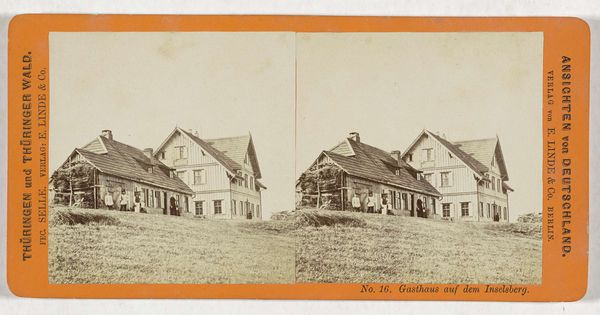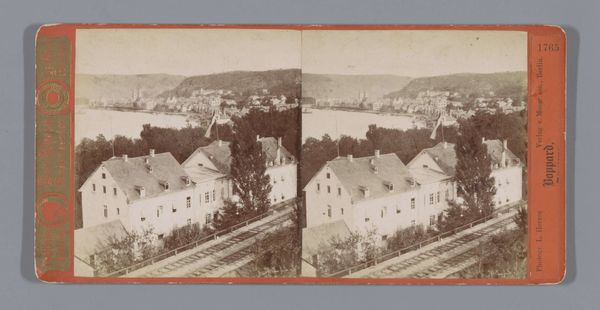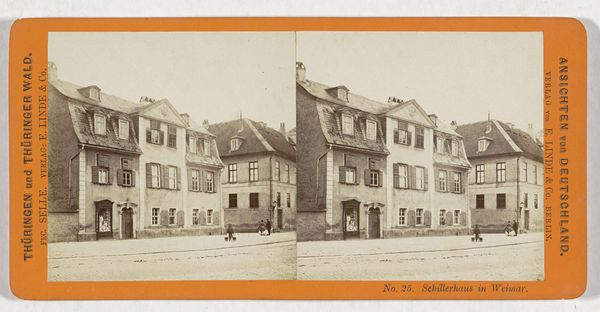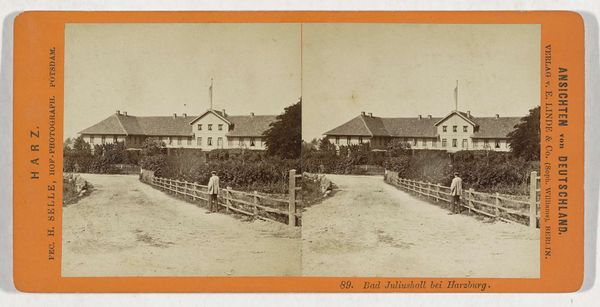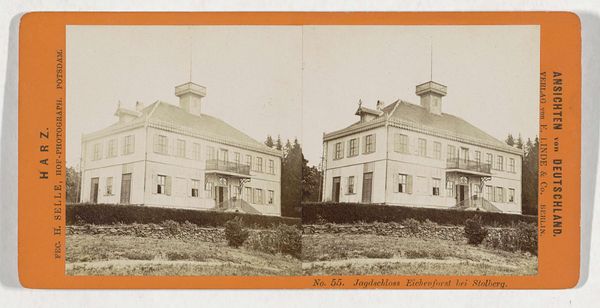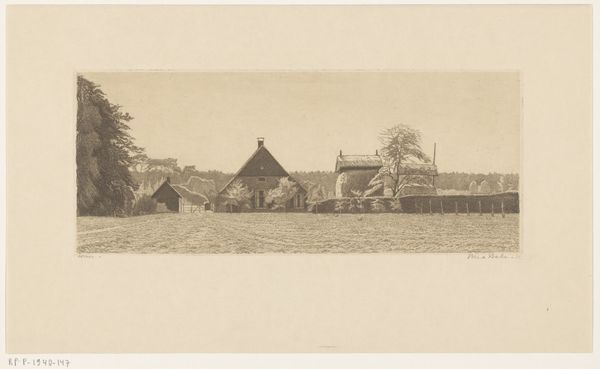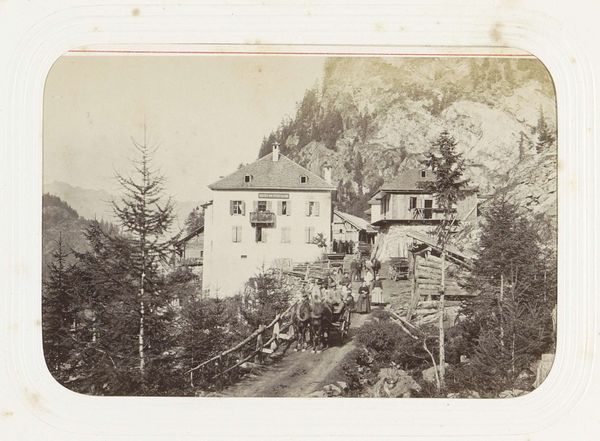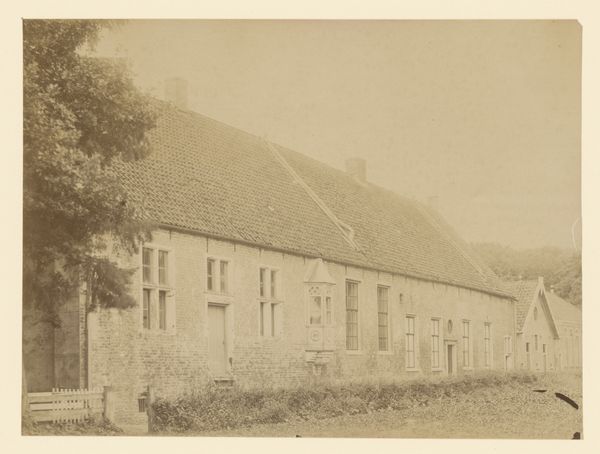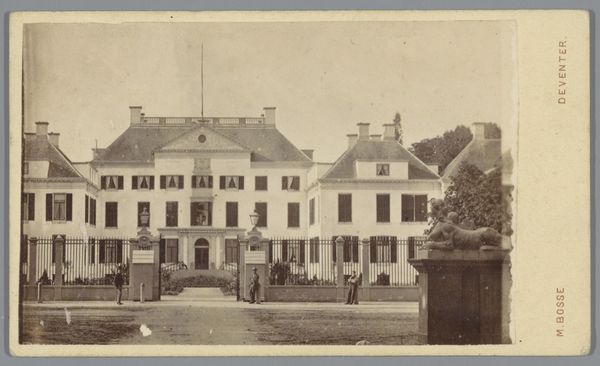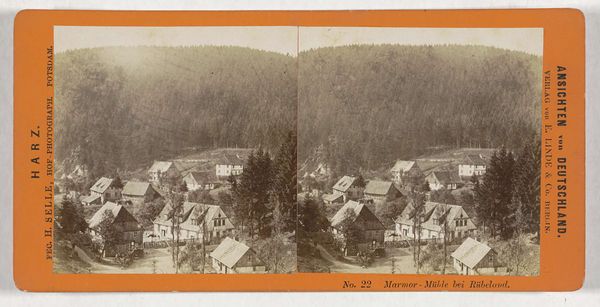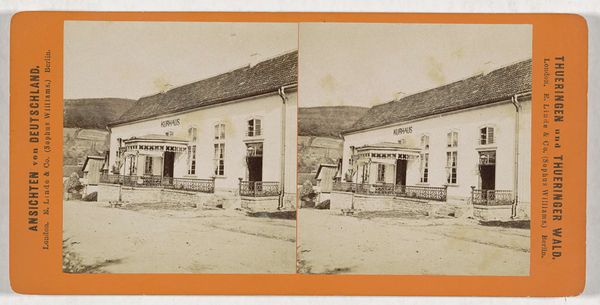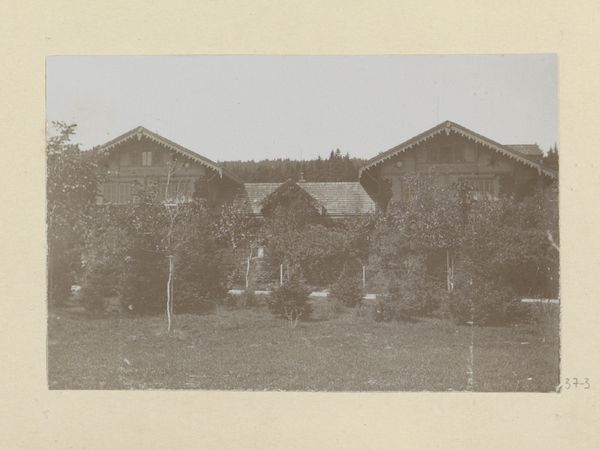
Dimensions: height 86 mm, width 176 mm
Copyright: Rijks Museum: Open Domain
Curator: This stereoscopic albumen print by Hermann Selle, titled "Hotel op de Schmücke," invites us to step back into the late 19th century. The work, dating roughly between 1868 and 1890, presents a quaint view of a German guesthouse. What are your initial thoughts? Editor: The composition is immediately striking. The photograph, with its muted sepia tones, presents a stark and ordered façade. It almost feels as though the guesthouse is presented like a geometric object, set within its landscape. Curator: Indeed. Consider how Selle’s composition places the guesthouse not just in the Thuringian landscape, but almost rising from it. The very setting of a ‘Gashaus’–a site of communal gathering, plays into deeper Germanic traditions of hospitality and shared space, particularly in a more remote location. The building becomes a symbolic representation of societal connectivity. Editor: Interesting, yet I’m drawn more to the architectural features. Note how the linear details—the crisp lines of the building's structure against the soft backdrop of the Thuringian forest – create an intriguing contrast. The high vantage point flattens the spatial planes, enhancing the photograph’s sense of graphic abstraction. Curator: Ah, but the 'flatness,' as you call it, only strengthens its iconic resonance! The repetition of the building as it appears in each eye allows the image to reflect more than architectural aesthetics. Think about the idea of mirrored duplication. This visual echoing may be read as doubling down on concepts of shared experience, of togetherness within the community. Editor: I grant you that it might point toward the symbolic nature of the establishment within its cultural context. Yet I’m still riveted by how the geometric volumes intersect: how the gable roof intersects the facade, and how that form is repeated between each stereo frame. There's a deliberate, almost mathematical sensibility to its spatial rendering. Curator: And what, might I ask, does that geometricality tell us? The clean, well defined photograph removes an understanding of a rapidly developing, and standardizing world. The image creates a very defined sense of 'place', which invites an intimacy and feeling of accessibility which might be difficult today. Editor: Ultimately, the image allows for multiple points of entry, with its formal design and symbolic residence that speak to cultural connections to its historical moment. Curator: Exactly. An object lesson in what happens when pictorial codes meet profound visual arrangements.
Comments
No comments
Be the first to comment and join the conversation on the ultimate creative platform.

